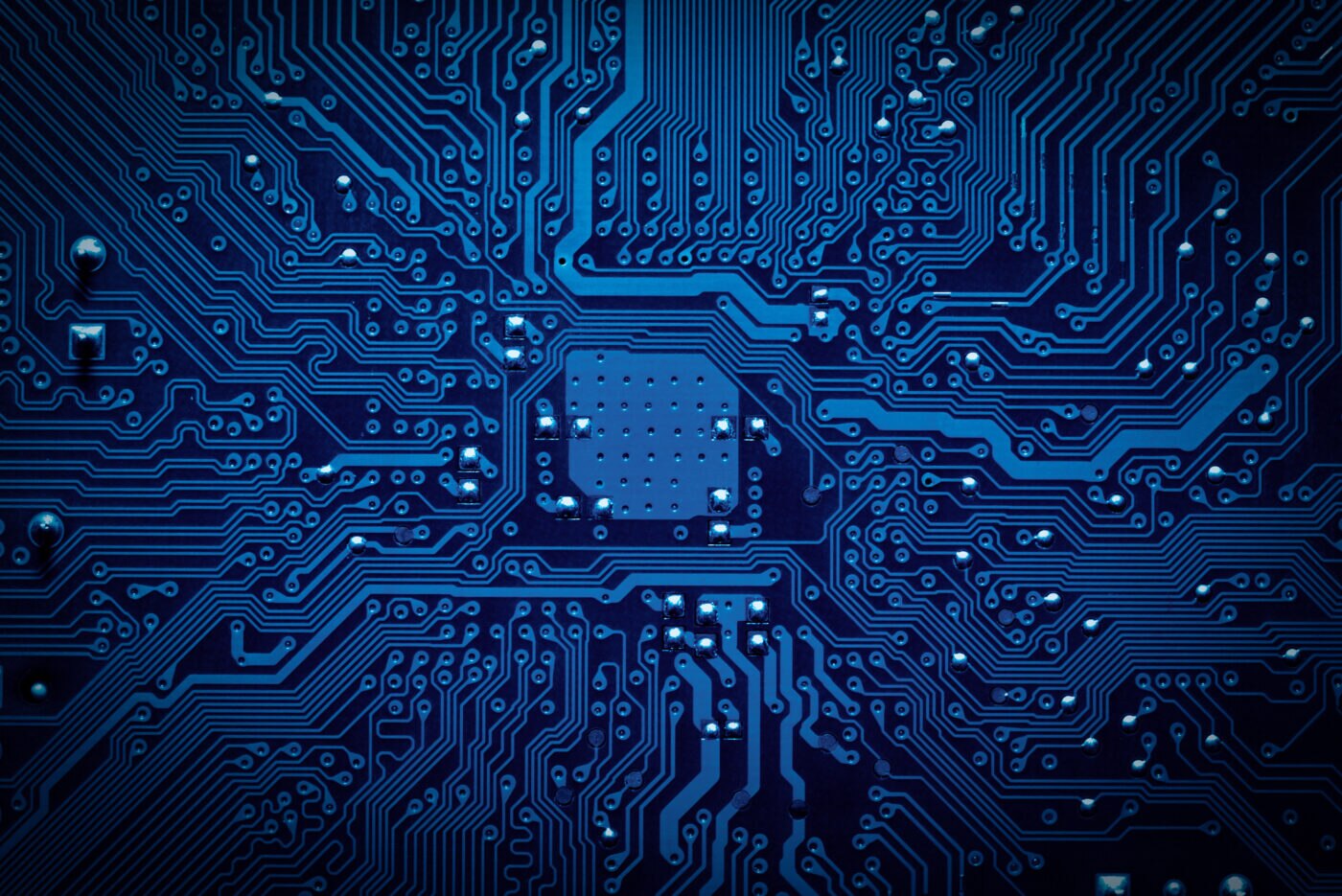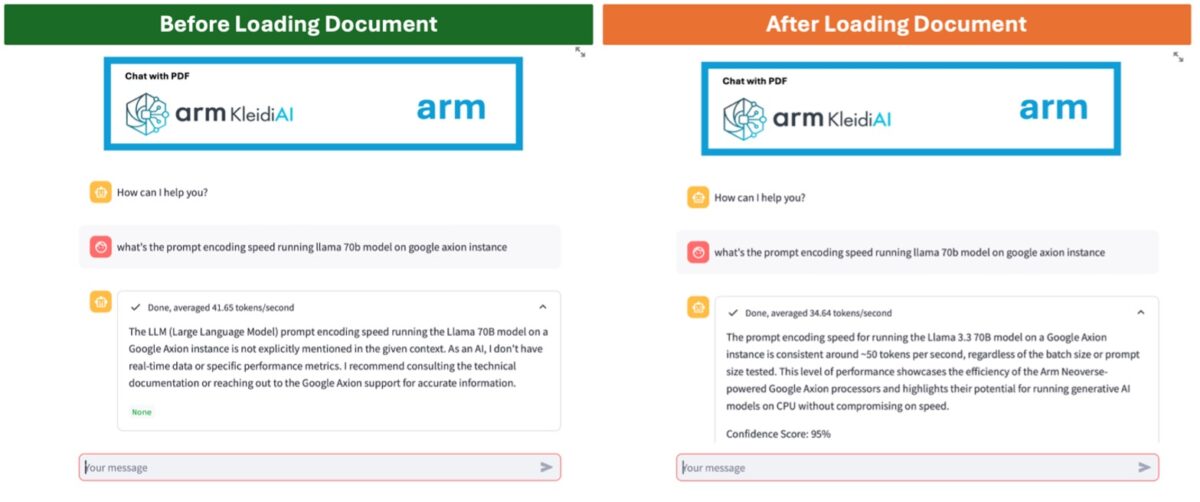April 2025 Roundup: Arm Innovations Advancing AI and Edge Computing

Every month, the Arm Editorial Team curates the most impactful Arm innovations from across the company’s ecosystem. April 2025 was no exception and this month’s roundup explores how developers, engineers, and partners are meeting the demands of modern workloads and making life smarter, faster, and more efficient using Arm technology.
From optimizing AI infrastructure to rethinking how we interact with vehicles, PCs, and mobile devices, here are eight innovations that caught our attention this month.
Arm and MediaTek bring AI-Optimized PCs with Kompanio Ultra
If you’re looking for signs that the PC market is changing, look no further than the Chromebook Plus. Built on MediaTek’s Kompanio Ultra, powered by Arm, the latest generation brings AI-enabled features, longer battery life, and fanless design into lightweight, portable systems.
Chris Bergey, SVP & GM, Client Line of Business, Arm, joins Adam King, VP & GM, Client Computing Business Unit, MediaTek, to explore how the PC landscape is shifting – driven by AI, mobile-first innovation, and changing user expectations. They discuss the impact and evolution of video conferencing, growing demands for all-day battery life and high-performance fanless designs, and how many of these innovations originated in smartphones.
Improving AI accuracy with Retrieval-Augmented Generation on Google Axion
AI models are getting bigger and better, but with that comes new challenges around relevance and real-time context. Retrieval-Augmented Generation (RAG) offers models the ability to fetch information from external sources while they work.

Na Li, Principal ML Solutions Architect at Arm, breaks down how RAG is being deployed on Google’s Axion processors, built on Arm Neoverse, and how this pairing improves model accuracy and efficiency. This especially critical for businesses running dynamic, high-volume workloads where latency and relevance matter.
A Python-based approach to Arm Architecture Analysis with AARCHMRS
Understanding what your hardware is capable of shouldn’t be a guessing game, especially when you’re building tools, firmware, or performance-critical software.
In a hands-on guide, Joh Hunt, Senior Applications Engineer at Arm, shows how to use one of the Arm Innovations, such as the Arm Architecture Machine Readable Specification (AARCHMRS) with Python. Whether you’re a system architect or an engineer learning about A-profile features, this walkthrough offers a practical way to make sense of architectural data, and put it to good use.
Mapbox uses Arm Compute Platform to power in-vehicle AI experiences
Cars are becoming computers on wheels, and with that, the need for intelligent, low-latency AI has never been greater. From real-time perception to natural voice interaction, the bar for in-vehicle systems keeps rising.
Peter Sirota, CEO of Mapbox, speaks to how the Arm Compute Platform is enabling AI-powered experiences in vehicles for automakers like BMW, Toyota, and Rivian. Peter also outlines what’s required to support large language models (LLMs), perception engines, and contextual driving features, all while staying within strict power and performance envelopes.
Deploying PyTorch models on Arm Devices for efficient Edge AI
Edge AI is everywhere – from industrial robotics to smart cameras. This means developers need reliable ways to get their models onto devices that can operate independently of the cloud.
In a tutorial that’s as approachable as it is practical, Cornelius Maroa, Arm Ambassador, walks through how to convert and deploy PyTorch models on Arm-based edge devices like the Raspberry Pi and Jetson Nano. Using TorchScript, ONNX, and Arm NN, Cornelius maps out a path that may developers are now following to bring intelligence closer to where data is generated.
How Godot Games is enhancing Mobile Game Performance with Arm Innovations
Game developers have long worked around mobile hardware limits, but things are changing fast. Better tooling and platform-level optimizations are now making it easier to push mobile game performance further.
At GDC 2025, Clay John, Rendering Maintainer and Board Member of the Godot Engine project, shared what’s new in the open-source engine, including improvements supported by Arm. With upgraded rendering paths and new profiling tools, Godot developers can now better optimize games for Arm-powered Android devices.
Boosting bare-metal AI performance with KleidiAI MatMul Kernels
Not all AI Runs in the cloud. For workloads on embedded systems or latency-sensitive platforms, performance needs to come without the overhead of a full operating system.
Paul Black, Director of Product Management at Arm, shares how the KleidiAI team has optimized matrix multiplication kernels, a core component of most AI workloads, for bare-metal Arm environments. The result? A leaner, faster compute for real-time inference where milliseconds make a difference.
Why Arcee AI switched from GPUs to Arm-based infrastructure
Not every AI model needs a data center full of GPUs. In fact, for many organizations, the path forward lies in doing more with less.
Julian Simon, Chief Evangelist at Arcee AI, explains why this team is transitioning its AI infrastructure from GPU-heavy setups to Arm-based platforms. The move has led to lower costs, higher throughput, and better scalability across edge and cloud deployments. For companies chasing sustainable AI at scale, it’s a shift worth watching.
Subscribe to the Arm Newsroom to stay informed about the latest technology developments from Arm.
Any re-use permitted for informational and non-commercial or personal use only.











